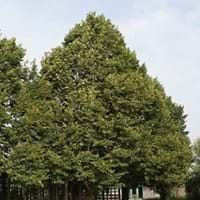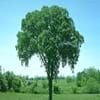Life Span
Perennial
Perennial
Type
Tree
Bulb or Corm or Tuber
Origin
North America, Northeastern United States, Mid-Atlantic United States, Southeastern United States, North-Central United States, Central United States, South-Central United States, Texas, Canada
Hybrid origin
Types
Not Available
Not Available
Habitat
gardens, Hardwood forests, Hillside, Tropical rainforest, Woods
tropical environments
USDA Hardiness Zone
3-8
8-11
AHS Heat Zone
8-1
Not Available
Sunset Zone
1a, 1b, 2a, 2b, 3a, 3b, 4, 5, 6, 7, 8, 9, 10, 11, 12, 13, 14, 15, 16, 17
21,22
Habit
Upright/Erect
Clump-Forming
Flower Color
Light Yellow
White, Red, Light Pink
Flower Color Modifier
Bicolor
Bicolor
Fruit Color
Sandy Brown
Green, Brown
Leaf Color in Spring
Green
Green, Dark Green
Leaf Color in Summer
Dark Green
Light Green
Leaf Color in Fall
Light Yellow, Brown, Ivory
Several shades of Green
Leaf Color in Winter
Not Available
Light Green
Leaf Shape
Heart-shaped
Long Linear
Plant Season
Spring, Summer, Fall
Spring, Summer, Winter
Sunlight
Full Sun, Partial Sun
Full Sun, Partial Sun
Growth Rate
Medium
Medium
Type of Soil
Clay, Loam
Loam, Sand
The pH of Soil
Acidic, Neutral, Alkaline
Acidic, Neutral
Soil Drainage
Well drained
Well drained
Bloom Time
Early Summer
Not Available
Tolerances
Not Available
Deer resistant
Where to Plant?
Ground
Container, Ground, Pot
How to Plant?
Seedlings, Stem Planting
Divison, From Rhizomes, Tubers
Plant Maintenance
Medium
Low
Watering Requirements
Requires watering in the growing season, Water Deeply, Water twice a day in the initial period
Average Water Needs
In Summer
Lots of watering
Lots of watering
In Spring
Moderate
Moderate
In Winter
Average Water
Average Water
Soil pH
Acidic, Neutral, Alkaline
Acidic, Neutral
Soil Type
Clay, Loam
Loam, Sand
Soil Drainage Capacity
Well drained
Well drained
Sun Exposure
Full Sun, Partial Sun
Full Sun, Partial Sun
Pruning
Remove damaged leaves, Remove dead branches, Remove dead leaves
Cut or pinch the stems, Remove damaged leaves, Remove dead branches, Remove dead leaves
Fertilizers
All-Purpose Liquid Fertilizer
as it is a flowering plant, use high phosphorous content fertilizer, Nitrogen, Phosphorous, Potassium, Requires high amount of nitrogen
Pests and Diseases
Red blotch
Aphids, Grasshoppers, Mealybugs, Mites, Red blotch, Slugs, Snails
Plant Tolerance
Drought
Deer resistant
Flowers
Insignificant
Showy
Flower Petal Number
Single
Not Available
Edible Fruit
No
Not Available
Fragrant Flower
Yes
Not Available
Foliage Texture
Coarse
Medium
Foliage Sheen
Matte
Glossy
Attracts
Not Available
Bees, Butterflies, Hummingbirds
Allergy
Not Available
poisonous if ingested
Aesthetic Uses
Showy Purposes
Beautification, Bouquets, Cottage Garden, Showy Purposes
Beauty Benefits
Not Available
Not Available
Environmental Uses
Air purification
Not Available
Medicinal Uses
Bladder Infection, Cold, Cough, Diuretic, Fever, Headache, High blood pressure, Used as a sedative
Not Available
Part of Plant Used
Whole plant
Flowers
Other Uses
Beneficial species for attracting pollinators, Used as Ornamental plant, Used for its medicinal properties, Used in making musical instruments
Used as Ornamental plant, Used for bedding in gardens
Used As Indoor Plant
No
Yes
Used As Outdoor Plant
Yes
Yes
Garden Design
Shade Trees, Street Trees
Container, Cutflower, Houseplant, Mixed Border, Tropical
Botanical Name
TILIA americana
HIPPEASTRUM 'Picotee'
Common Name
American Basswood
Florist Amaryllis, Hippeastrum, Picotee Hippeastrum
In Hindi
अमेरिकी Basswood
HIPPEASTRUM
In German
amerikanischen Basswood
HIPPEASTRUM
In French
tilleul d'Amérique
HIPPEASTRUM
In Spanish
tilo americano
Hippeastrum
In Greek
Αμερικανός Basswood
Hippeastrum
In Portuguese
Basswood americano
HIPPEASTRUM
In Polish
Amerykańska Lipa
Hippeastrum
In Latin
American Basswood
Hippeastrum
Phylum
Anthophyta
Magnoliophyta
Class
Magnoliopsida
Magnoliopsida
Order
Malvales
Asparagales
Family
Tiliaceae
Amaryllidaceae
Clade
Angiosperms, Eudicots, Rosids
Angiosperms, Monocots
Tribe
Tileae
Not Available
Subfamily
Tilioideae
Amaryllidoideae
Season and Care of American Basswood and Hippeastrum
Season and care of American Basswood and Hippeastrum is important to know. While considering everything about American Basswood and Hippeastrum Care, growing season is an essential factor. American Basswood season is Spring, Summer and Fall and Hippeastrum season is Spring, Summer and Fall. The type of soil for American Basswood is Clay, Loam and for Hippeastrum is Loam, Sand while the PH of soil for American Basswood is Acidic, Neutral, Alkaline and for Hippeastrum is Acidic, Neutral.
American Basswood and Hippeastrum Physical Information
American Basswood and Hippeastrum physical information is very important for comparison. American Basswood height is 1,520.00 cm and width 760.00 cm whereas Hippeastrum height is 38.10 cm and width 30.10 cm. The color specification of American Basswood and Hippeastrum are as follows:
American Basswood flower color: Light Yellow
American Basswood leaf color: Green
Hippeastrum flower color: White, Red and Light Pink
- Hippeastrum leaf color: Green and Dark Green
Care of American Basswood and Hippeastrum
Care of American Basswood and Hippeastrum include pruning, fertilizers, watering etc. American Basswood pruning is done Remove damaged leaves, Remove dead branches and Remove dead leaves and Hippeastrum pruning is done Cut or pinch the stems, Remove damaged leaves, Remove dead branches and Remove dead leaves. In summer American Basswood needs Lots of watering and in winter, it needs Average Water. Whereas, in summer Hippeastrum needs Lots of watering and in winter, it needs Average Water.





